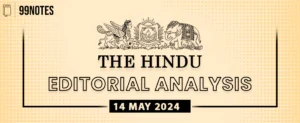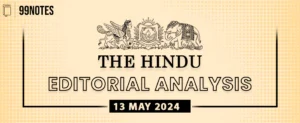(Source – The Hindu, Page – 1) Topic: GS2 – International Relations, GS3 – Indian Economy – Effects of liberalisation on the economy The topic is crucial for UPSC as it addresses India’s economic dependency on China and its strategic implications. |
| Context: |
| ● The news highlights India’s escalating imports from China, reaching over $101 billion in 2023-24, raising concerns over economic dependency and national security implications. |
Analysis of the news:
- India’s imports from China surged to over $101 billion in 2023-24 from around $70 billion in 2018-19, with China’s share of India’s industrial goods imports rising from 21% to 30% over 15 years.
- Chinese imports have risen 2.3 times faster than India’s total imports over the same period, impacting various sectors including machinery, chemicals, pharmaceuticals, and textiles.
- The trade deficit with China has exceeded $387 billion over six years, with India’s exports to China remaining stagnant at around $16 billion annually.
- Although India’s exports to China increased in 90 principal commodities, accounting for 67.7% of India’s export basket to China, the trade deficit persists.
- India’s total merchandise imports in 2023-24 amounted to $677.2 billion, with 15% ($101.8 billion) sourced from China.
- China is the top supplier in eight major industrial sectors in India, prompting concerns over economic and national security implications.
- The study suggests reassessing strategies to mitigate economic risks, bolster domestic industries, and reduce dependency on single-country imports, particularly from geopolitical competitors like China.
| Implications of imbalance in India – China trade relations |
Implications of Imbalance in India-China Trade Relations: ● Trade Deficit: India faces a significant trade deficit with China, leading to economic imbalance and dependency on Chinese imports. ● Loss of Domestic Industries: Chinese imports undermine domestic industries in India, particularly in sectors such as electronics, manufacturing, and pharmaceuticals. ● Strategic Concerns: Trade imbalance raises strategic concerns for India, as it increases dependency on China for critical goods and technologies. ● Security Risks: Overreliance on Chinese imports poses security risks, as it exposes India to supply chain disruptions and vulnerabilities in times of geopolitical tensions. ● Market Access Issues: India seeks greater market access for its products in China, but faces barriers such as non-tariff barriers, regulatory hurdles, and unfair trade practices. ● Geopolitical Tensions: Trade imbalances exacerbate geopolitical tensions between India and China, impacting bilateral relations and regional stability. Way Forward: ● Diversification of Trade Partners: India should diversify its trade partners and reduce dependency on China by exploring new markets and strengthening trade ties with other countries. ● Promotion of Domestic Industries: Encourage domestic manufacturing and industries through incentives, subsidies, and policy support to reduce reliance on Chinese imports. ● Addressing Market Access Issues: Negotiate with China to address market access issues, reduce trade barriers, and promote fair and reciprocal trade practices. ● Enhancing Competitiveness: Improve the competitiveness of Indian industries through investments in infrastructure, technology, research and development, and skill development. ● Bilateral Dialogue: Engage in bilateral dialogues and negotiations with China to address trade imbalances, enhance cooperation, and promote balanced trade relations. ● Strengthening Regional Cooperation: Strengthen regional economic cooperation frameworks such as ASEAN, BIMSTEC, and RCEP to diversify trade and reduce dependency on any single partner. |
| PYQ: ‘China is using its economic relations and positive trade surplus as tools to develop potential military power status in Asia’, In the light of this statement, discuss its impact on India as her neighbour. (150 words/10m) (UPSC CSE (M) GS-2 2017) |
| Practice Question: Discuss the economic and strategic ramifications of India’s increasing import dependency on China, emphasising measures to mitigate risks. (250 Words /15 marks) |











